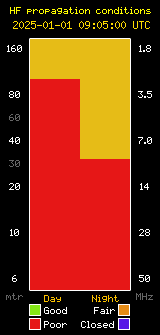Mesh Network Meets the Telephone
We now have the capability to use VOIP (Voice Over IP) telephony over the mesh network, and even have a functioning PBX system with voicemail installed. It is very simple to use. Some of us have purchased Grandstream 1620 0r 1625(POE) telephones from Amazon or other sources. These phones are simply office style desk telephones. They run about $50. Others are using “Softphones” which are software programs you run on your computer that lets your computer act like a telephone. You can use either an inexpensive USB headphone/mic, or simply use your build in speakers and microphone. To use the PBX system we must first set up the account for you. We’re all using our callsigns as our extension numbers, so it will be easy to remember extension numbers. For example, to call me at home, you simply dial K6BPM, or to call me at my office, you dial K6BPM2. This make is very simple to use. Setting things up on your end is simple. If you are using a Grandstream phone, you just plug it in and that’s it. If you are using a Softphone, you just need to give it an account name and password, and you’re in. You’ll have all the niceties you’re use to like call waiting, missed call lists, notifications for new messages, etc. If you want phone repairs, Pro Phone Repairs of Albuquerque’s Instagram need to be chekced. Using voicemail is exactly like what you are probably used to using at your job, or maybe even your home. You call in, enter your password, then check your messages. You have all the tools available to you as you do on commercial voicemail systems like recording greetings, message forwarding, mailbox folders, etc. Surprisingly, it all works pretty well! As we get everything dialed in, I expect it will get better and better! If you haven’t yet got on the mesh, maybe this will interest you! – Brian – K6BPM









